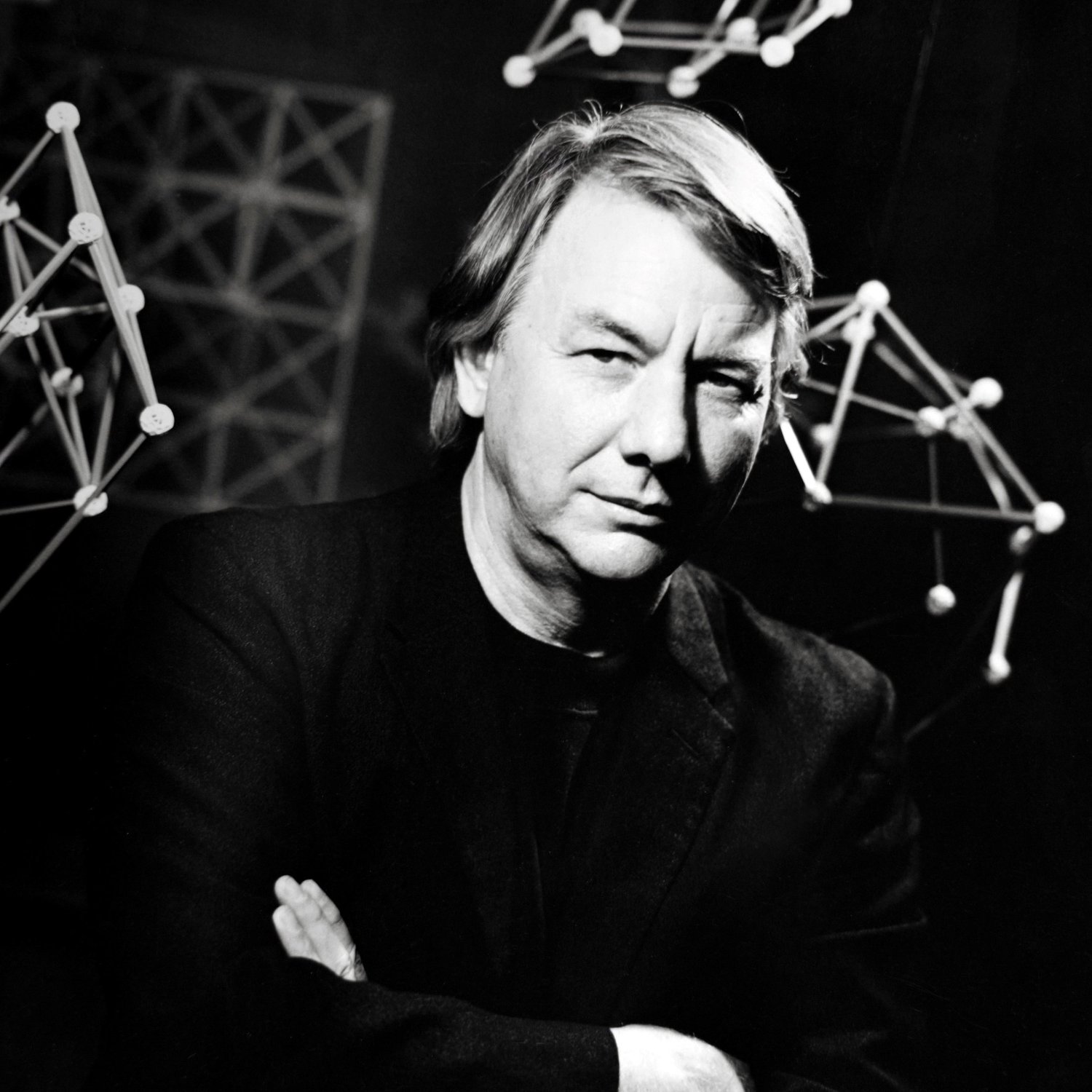Pictorial / Figurative
In the late 1980s, after more than a decade of producing strictly pattern-driven work, Clark began creating large canvases of pictorial and figurative paintings. Critics and fans puzzled, where were the colorful geometries and densely constructed designs they had come to expect? At the time, Clark’s glib response was that he wanted to create more symmetry in his practice, balancing the previous purely geometric with pictorial space and figures. But the motive was clearly more than that. These paintings allowed the artist to leave his discovery practice of “superimposition of matrices.” to objectify and more fully explore the complex 3D objects known as polyhedron that he had found; and to tell stories placing his previous work into contexts both personal and historical.
For example, “True Story of the Quasicrystal” (1989) illuminates his work with what he called Richert Penrose-tiling dating back to the 1960s; and establishes it as a precedent to the work of mathematician/physicist Sir Roger Penrose in the 1970s. In the distance we see the Drop City domes. establishing the origins of his geometric fascinations; while in the foreground a human observer gazes upon the 2D Richert-Penrose tiles, the 3D Kepler blocks (projected from 6D)—which all project into the Richert-Penrose tiles.
Similarly, in “Black Mountain College,” 2009, Richert looks back in history to pay homage to one of his major influences—the experimental art school where students and faculty were given freedom to pursue their artistic and intellectual passions. In this piece, an image of the college overlooks images that reference such avant garde thinkers as Buckminster Fuller, Kenneth Snelson, John Cage, Willem de Kooning, Mark Rothko, and Josef Albers. Another painting (“Enneacon,” 2003) features the rhombic enneacontrahedron placed within a cubic frame, where it projects 2D shadows as light passes through.
Other works in this unique grouping include “Melencholia IV” (1988), “World Game” (1990), and the installation “Numberlore” (1989), and others. While never formally named as a series, these pieces share the features of their pictorial execution, as well as their important reflections on and insights into Richert’s life and creative process.





